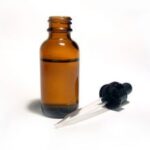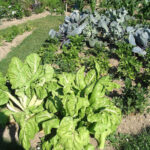When it comes to garden tools, a rotary tiller is one of the biggest investments you can make for your garden. The cost of a tiller can range from $40 to several hundred dollars, depending on the type you choose.
Tillers are essential for making light work of soil preparation. Anyone who has ever prepared a garden manually can tell you it is back-breaking work. Rotary tillers allow you to easily loosen and aerate the soil without the grueling labor. Gardens of any size can benefit from the use of a tiller, but it is important that you choose the one that is right for your situation.
Types of Tillers
There are three basic types of tillers: front tine, rear tine, and mini tillers. They can range in size from 8 inches to 2 feet wide and come in many different horsepower ratings, usually 1-8. The higher the horsepower, obviously, the more power you’ll have. They type you choose will depend on the size of your garden and soil type.
Front Tine
Front tine tillers have tines that rotate forward. This tends to move the machine forward when tilling. These tillers will require a little more muscle to use. With wheels in the back, however, these tillers are easy to push. Front tine tillers are best for medium jobs and softer soils. A garden of less than 5000 square feet would benefit from a front tine tiller. However, if you have tough soil that is rocky or clay, a rear tine tiller would be a better choice.
Rear Tine
Rear tine tillers are heavier-duty machines and they have more options. Depending on the type of tiller you get, the tines can rotate forward, backward, or be reversible between the two. These are less labor-intensive, and are great for breaking up hard soils. If you have a garden larger than 5000 square feet, rear tine tillers are recommended.
Mini Tillers
Sometimes called mini-cultivators, these tillers are the miniature version of the front tine tillers. These work well in smaller gardens, usually less than 1000 square feet. They are light weight and easy to move, but are not powerful enough to handle tough or untilled soils.
Cost
The cost of a tiller may also be a factor in your decision. While rear tine tillers are easy to use and good for all types of soil, they are also the highest-priced. Front tine tillers are less expensive, but if you have heavy soils, they are not as effective. They would still work, but you would be expending a lot of unnecessary energy to use them. If cost is a factor for you and you don’t expect to be using it enough to justify the cost, you may want to consider renting instead. You can still get the power you need to make your work easier without the big expense. This will give you time to save for a quality tiller that will benefit your garden.
In the long run, tillers are a great investment for any garden, large or small. By lessening the workload on the preparation, you will have more time for your plants. Plus, the soil will be lighter and more aerated than with manual tilling. Lighter, more balanced soil leads to stronger, healthier plants, and that is what any gardener is looking for.




